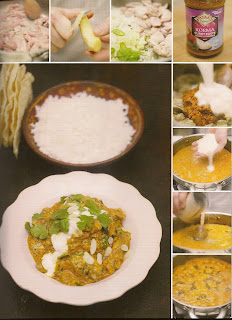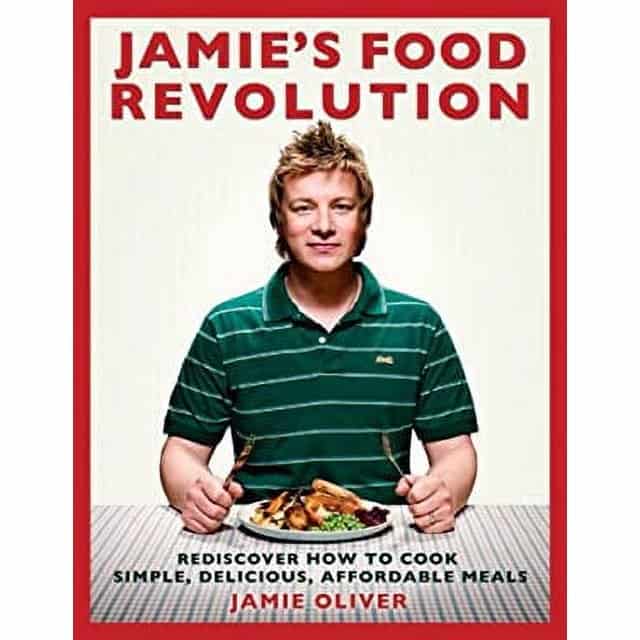
The first post on Chewing the Fat was about Jamie Oliver’s Beef and Guinness Pie so if you’ve been with us for the whole ride, you know I am a huge fan of the man. I was very pleased to see his latest book show up under the Christmas tree (“Jamie’s Food Revolution”, Hyperion 2009) You can buy it here: https://amzn.to/3u6bmKV It is both a book and a crusade. The crusade is to counter some pretty dreadful statistics about eating in America and Jamie’s native Britain. Did you have any idea that fewer than a third of Americans cook their dinners from scratch these days? Or worse, that although 75 percent of us eat most of our meals at home, over half of those dinners are fast food, delivery, or takeout? Or even worse, that Americans spent more money on fast food in 2007 than they did on education? But Jamie has a plan.
It’s called “Pass it On”. Jamie wants to recruit his readers to learn just one recipe from each of the 14 chapters of “Food Revolution” and then, to pass those recipes (and assumedly some words of encouragement) to two more people. Or preferably four, because when Jamie does the math it works out that four disciples “teaching four more only needs to repeat itself”, listen to this, “thirteen times and we’ve got more than the entire population of the United States cooking”.
Jamie started his movement off in Rotherham, which I judge is about as stereotypically “Britain Today” as you can get. That means that cooking had fallen out of favor and, when Jamie launched his now-famous assault on British school lunches, resistance to his campaign there was fierce. Women actually went down to the school gates where they passed French Fries and Hamburgers to their children.
Undeterred, our Jamie went so far as to meet with one his most vociferous critics, a woman named Julie Critchlow, to see if he could convince her to ‘pass it on’. He must have succeeded as her picture and those of many ordinary Rotherhamites pepper the pages of “Food Revolution”. All of which is to say “if they can do it, I sure the hell can”.
 “Jamie’s Food Revolution” starts at the very beginning. It’s all there, starting with what’s needed for kitchen quipment and what the pantry should hold. From there it moves quickly into the first chapter called “Twenty Minute Meals”. He’s honest. You don’t make a meal in 20 minutes without some organization. And he’s all for bagged salads and flatbreads, quick cooking cuts of chicken and beef and fresh and frozen vegetables. There are more explanatory pictures than there are beauty shots of food and his recipes are very detailed and perfect for someone who’s one step beyond boiling water. But there are some gems here like Spicy Moroccan Stewed Fish with Couscous and Salmon Tikka with Cucumber Yogurt.
“Jamie’s Food Revolution” starts at the very beginning. It’s all there, starting with what’s needed for kitchen quipment and what the pantry should hold. From there it moves quickly into the first chapter called “Twenty Minute Meals”. He’s honest. You don’t make a meal in 20 minutes without some organization. And he’s all for bagged salads and flatbreads, quick cooking cuts of chicken and beef and fresh and frozen vegetables. There are more explanatory pictures than there are beauty shots of food and his recipes are very detailed and perfect for someone who’s one step beyond boiling water. But there are some gems here like Spicy Moroccan Stewed Fish with Couscous and Salmon Tikka with Cucumber Yogurt. Photos at left by David Loftus and Chris Terry
In Indian cooking, the skin of the chicken is never eaten so if you don’t use skinless chicken breasts, remove the skin please. Here is the recipe:
Recipe for Jamie Oliver’s Quick and Easy Chicken Curry
2 medium onions
1 fresh green chile, optional
A thumb-sized piece of fresh root ginger
1 small bunch of fresh Cilantro
1 15½ oz can of chickpeas
Peanut or vegetable oil
1 tbsp. of butter
1 cup of Patak’s Korma Curry paste
1 15 ½ can of coconut milk
½ cup slivered or sliced almonds, plus extra for serving
Sea salt and freshly ground black pepper
1 5.3 oz container of Greek yogurt
1 lemon1. Cut the chicken into 1 inch pieces. Peel, halve and finely slice the onions. Halve, deseed and finely slice the chile, if you’re using it. Peel and finely chop the ginger. Finely chop the celantro stems and reserve the leaves. Drain the chickpeas.











